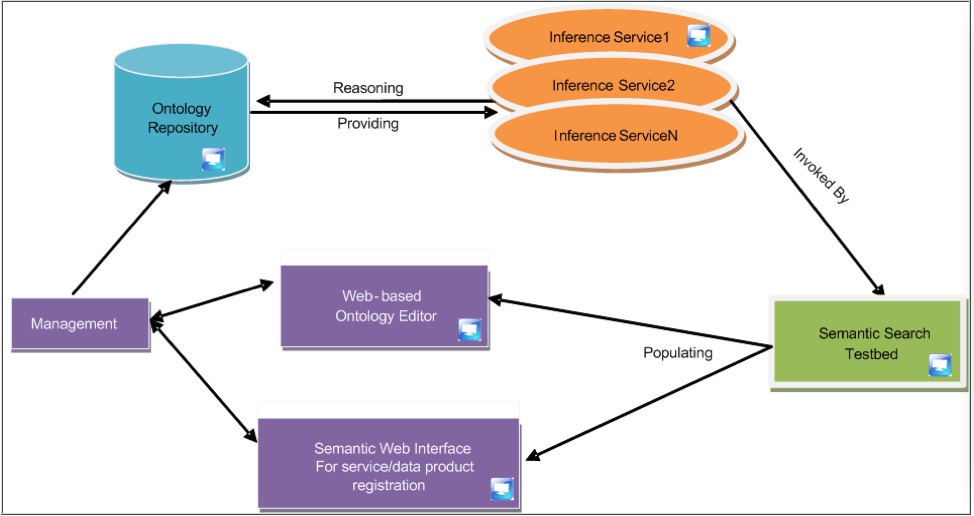Semantic Web Testbed Implementation
ESIP Semantic Web Testbed
Testbed endpoint: http://testbed.gmu.edu/swtestbed
The ESIP Semantic Web Testbed provides Earth Scientists an integral tool for registering, searching and visualization of Earth Science data and services. Arctic researchers benefit from the advanced technologies in conducting more efficient and accurate scientific analysis. The ESIP semantic search testbed aims to completely utilize the full knowledge encoded in the ontologies and provides a better search experience to end users. In this project, the ontology is built up through the guidelines. A reasoning engine enables the automatic assembly of shared services. It is also able to answer questions on the fly to support better decision making.
Architecture of the ESIP Semantic Web Testbed
The testbed is composed of three major components: registration, semantic search and ontology management. For semantic registration, a Web-based ontology editor – Web Protégé and RDF direct registration GUI are provided. The registered knowledge is managed in the ontology repository using an open source framework Sesame 2.3 and MySQL 5.0. The inference services that implement the semantic reasoning algorithm are deployed using Apache Tomcat 5.5.28 and Apache Axis 1.2. These services are invoked by the semantic search client (Figure) using the Asynchronous JavaScript and XML (AJAX) technology to reduce the processing load on the client side and to improve efficiency. The data sources that the semantic search client links to are popular geospatial web catalogues, including GOS (Geospatial One Stop), GCMD (Global Climate Master Directory), NCDC (National Climatic Data Center) and ECHO (Earth Observation ClearingHouse). Services discovered by the crawler are registered into GOS portal and are made available for the semantic search client. The knowledge that is inferred is organized and displayed in a tree-based style and is visualized using an open source tool Prefuse. The similarity matrix obtained from the neural network training was integrated to rank the relevance of recommended terms to the input keyword. An ontology expert can edit the inferred knowledge directly if he finds they are not complete or accurate. The changes are reflected immediately to any client accessing the ontology repository.
